Discover works of art right in your community
This innovative public art project showcases a selection of 12 stunning artworks from the City of Burnaby’s Permanent Art Collection. These large-scale reproductions will be displayed in community centres and public spaces until the end of 2026.
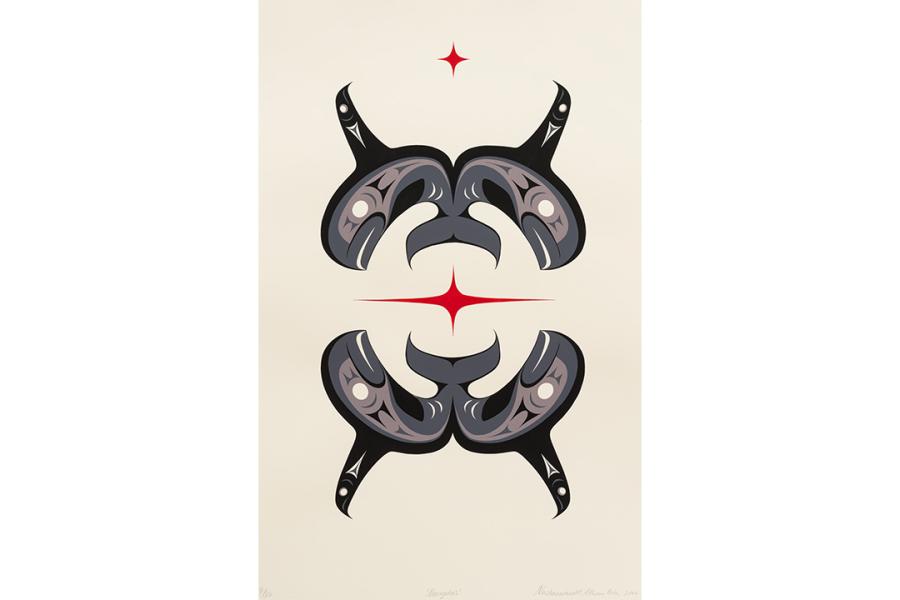
Atheana Picha, Navigators, 2022
Picha’s practice is grounded in learning Salish design through studying the old pieces, observing nature and gaining knowledge from her Elders and teachers. Navigators celebrates orcas, which Picha refers to as “finned relatives.” In making the work, Picha reflects on their emotional intelligence, the rich social traditions they carry, and their importance to our world and ecologies.
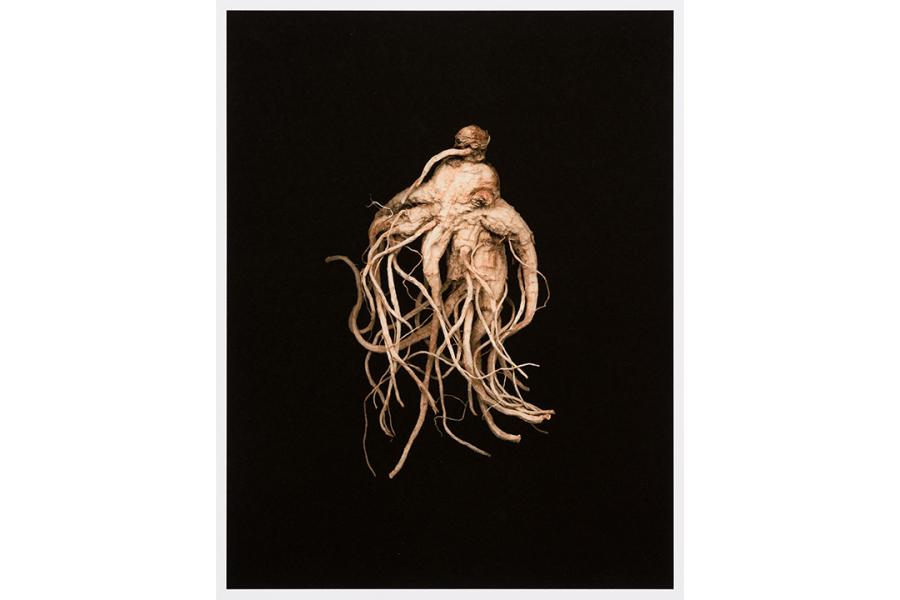
Evan Lee, Ginseng Root Study, 2004/2014
Ginseng Root Study invites reflection on tradition, migration and cultural identity in a changing world. Created using a flatbed scanner instead of a traditional camera, the image highlights the resemblance of ginseng—a valuable plant in Chinese medicine—to a human body, making the roots feel almost like portraits.
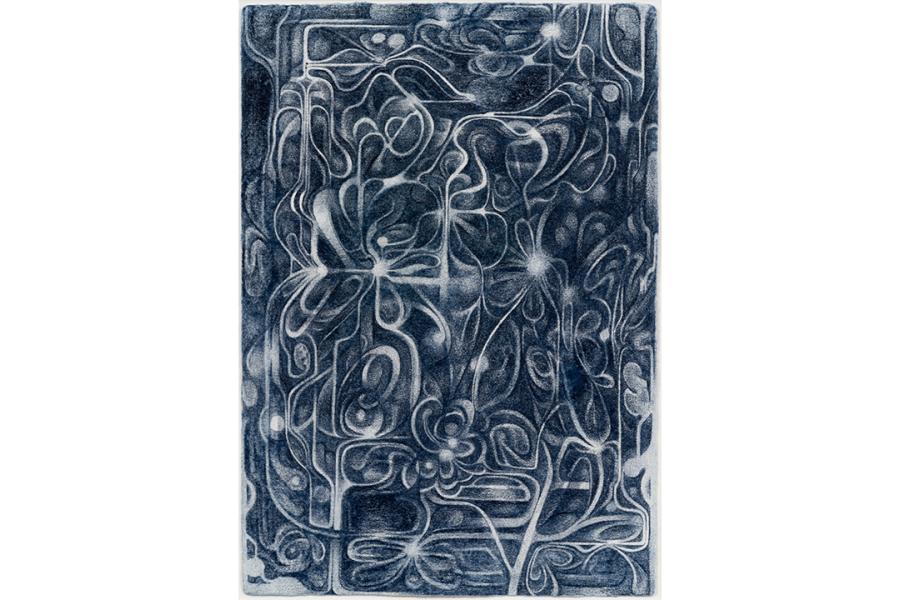
Hiromi Nakatsugawa, Memory Foam, 2022
Nakatsugawa’s work often blurs the boundaries between the mechanical and biological. Created through the delicate precision of a single blue pencil crayon, Memory Foam renders a universe of interwoven passageways. The drawing feels alive with movement, depicting networks of energy that flow and blend into each other like currents through an intricate, organic web.
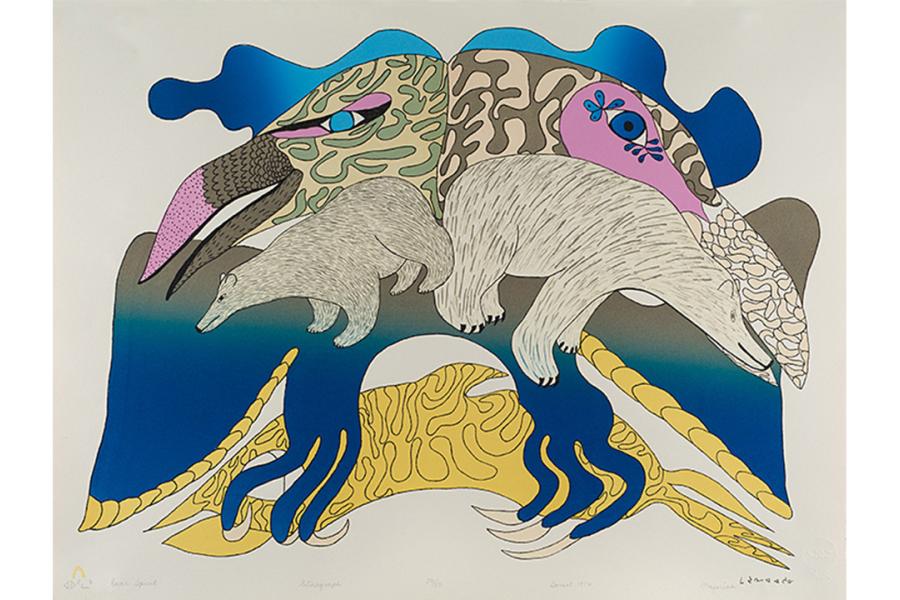
Mayoreak Ashoona, Bear Spirit, 1976
Born in Saturituk, South Baffin, Nunavut in 1946, Ashoona is known for use of vibrant colours and her imaginative graphics depicting the natural world from her unique Inuk perspective. Here, what looks like polar bears and large-beaked birds emerge in front of our eyes in a kaleidoscope of blue, pink, yellow and brown hues.
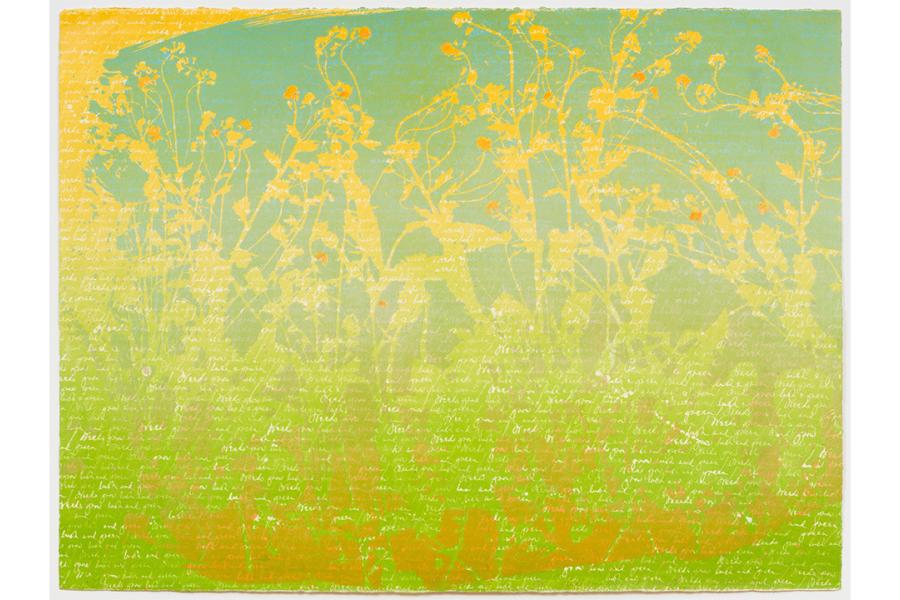
Anna Wong, Weeds Grow Lush and Green III, ca. 1975
Master printmaker, Wong blends an expressive application of ink layers with the silhouette of dandelions and the repeated handwritten words “weeds grow lush and green” to create a tribute to the humble weed, conveying a sense of wonder in the simple things.
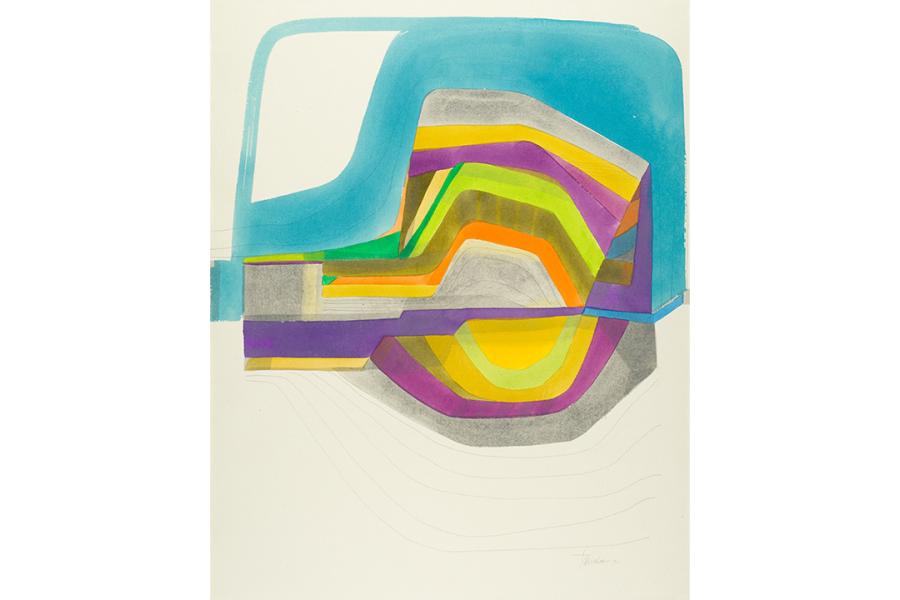
Takao Tanabe, Mirror Image, 1971
Known for depictions of landscapes with moods that ebb and flow with the change of seasons, Tanabe is one of the most significant artists in Canada. In Mirror Image, sweeping brushstrokes of vibrant acrylic paint curl across the page in layers above and below two rounded shapes, like an island reflected by water.
Temporary Cameron Community Centre
(inside The City of Lougheed Shopping Centre)
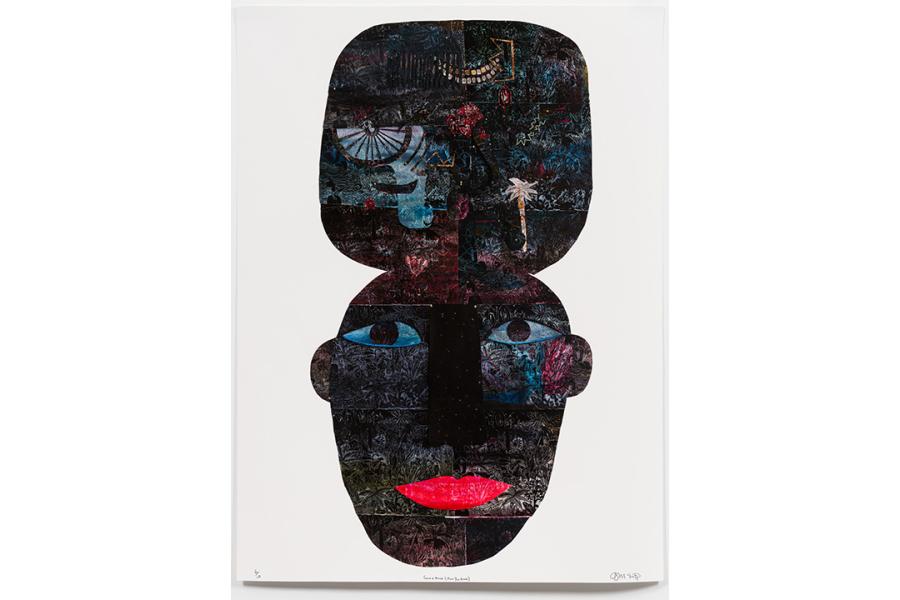
Anna Jane McIntyre, Game Face (Now You Know), 2022
McIntyre’s projects explore how people understand, create and maintain their ideas of self, belonging and culture. She combines her British-Trinidadian and adoptive-Canadian cultural influences by reworking ordinary materials to create surreal contexts. Her work acknowledges the past-present and imagines a best-case scenario dream future. To create Game Face (Now You Know), she immersed herself in the legacies of Blackness.
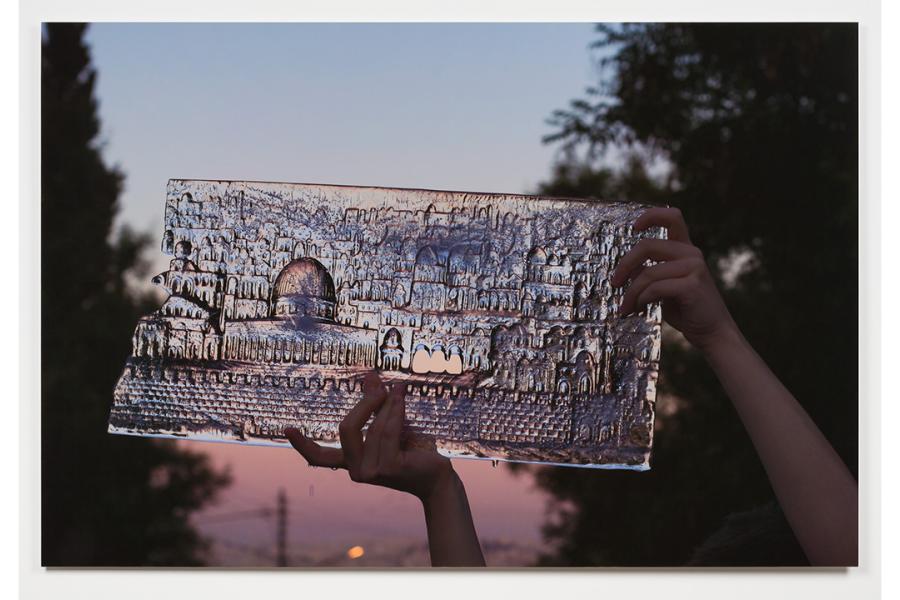
Nour Bishouty, Al-Quds Kabeer, 2017
Al-Quds Kabeer looks at the ways symbols and images influence identity, particularly for those who have left their original homeland. Here, Bishouty finds a new use for a series of molds for sculptures originally made by her late father Ghassan in the 1990s, recasting them in ice.
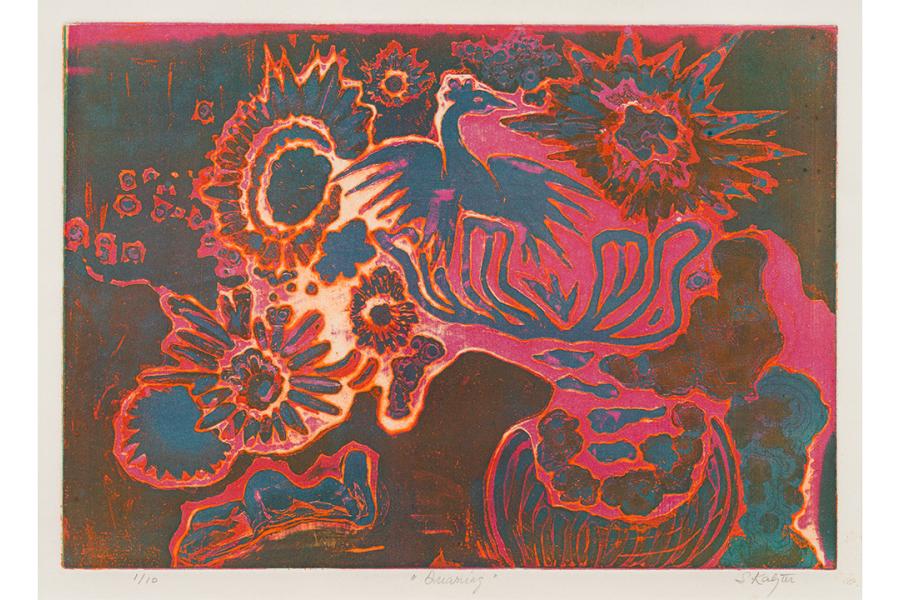
Salme Kaljur, Dreaming, ca. 1980
Estonian Canadian artist Kaljur created this artwork through the process of etching, a printmaking technique where an image is delicately carved into a copper plate. This method allows for fine details and rich textures in the final print. Dreaming captures a sense of Kaljur’s vivid imagination and her interest in surrealism.
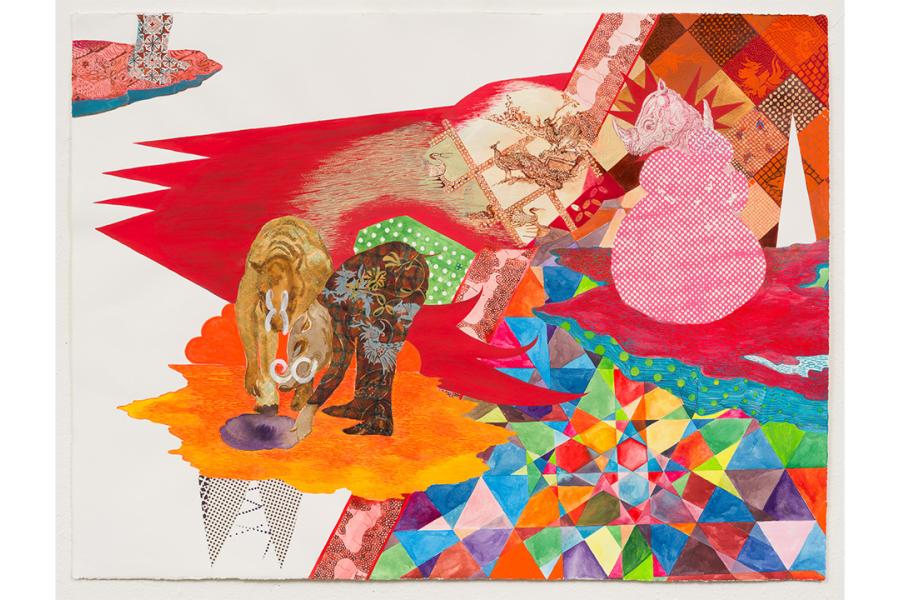
Diyan Achjadi, Digging to the Other Side, 2013
Born in Jakarta, Indonesia, Achjadi in interested in how illustration and ornamentation can act as records of ideas as they spread throughout culture. Through their artistic practice, they tell stories—both real and imagined—to explore the complex and at times conflicting histories of place.
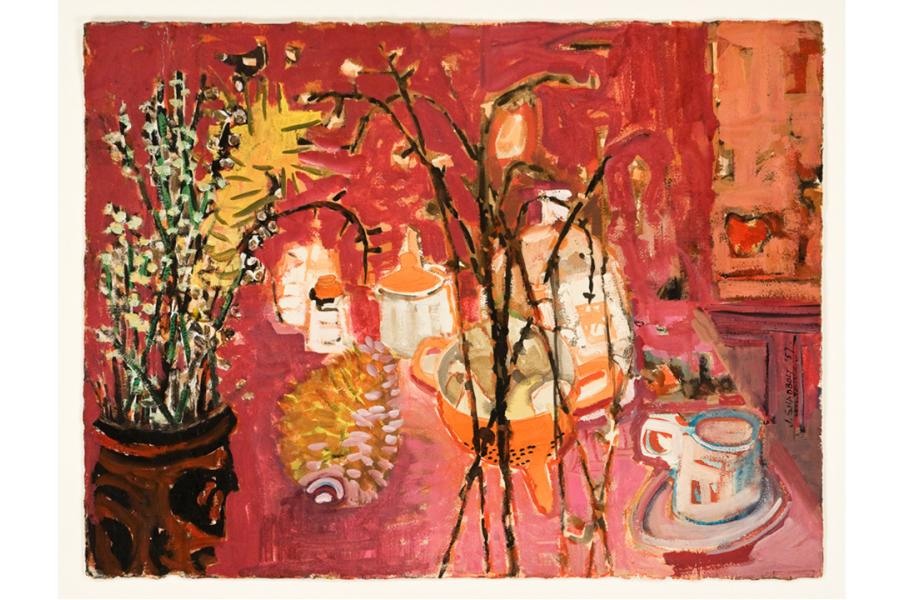
Jack Shadbolt, Still Life with Red Colander, 1957
This is the first artwork ever to be donated to what is now the City of Burnaby Permanent Art Collection. Painted by Shadbolt, it was given to the collection in 1960, by friend and fellow artist Harold Mortimer-Lamb. Featuring expressive lines and brushstrokes, we are presented with a kitchen table still life that feels both active and warm.
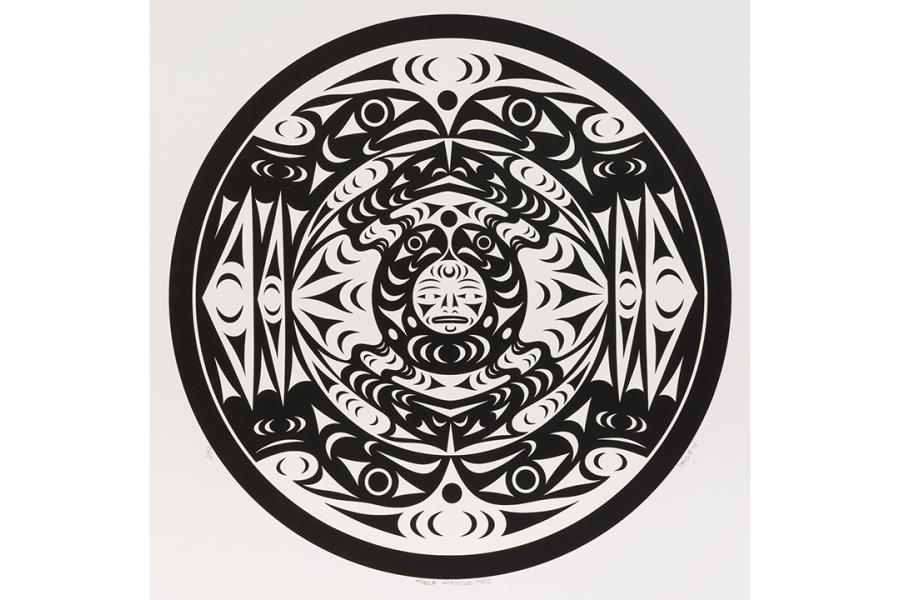
lessLIE, wHOLE w(((h)))orl(((d))), 2014
Both words and visual language play an essential part of lessLIE’s work. This contemporary Coast Salish artwork is designed in the spirit of spindle whorls, which have been used to spin wool from mountain goats and woolly dogs to create woven textiles. It depicts a human encircled by two salmon, four wolves and four thunderbirds.